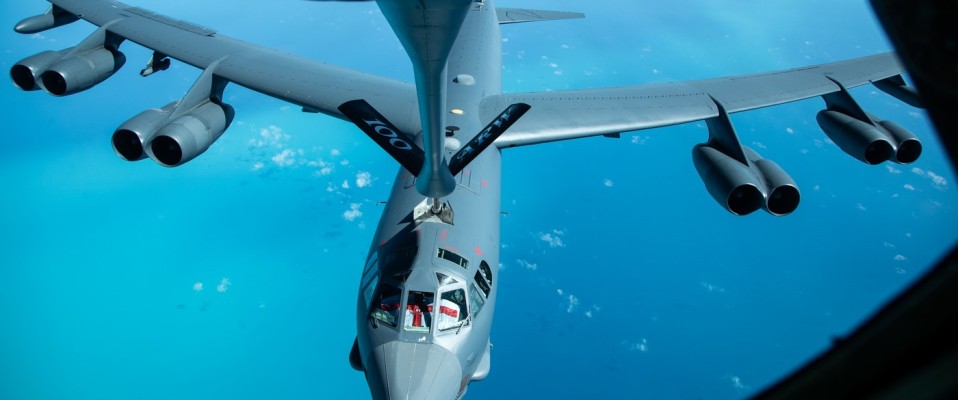BTF 24-3 with the 100ARW
The aerial rendezvous of the two dinosaurs of USAF
Report and photos by George Karavantos
August 11, 2024
Last June we had the opportunity to fly with the 100 ARW over the North Sea on an aerial refuelling mission for two USAF B-52s during their recent deployment to Europe under BTF 24-3.
Four U.S. Air Force B-52 Stratofortress bombers assigned to the 69th Expeditionary Bomb Squadron had been deployed to RAF Fairford, England on May 24, 2024 and were flying missions from there until June 20 in support of Bomber Task Force 24-3. The B-52s, assigned to the 5th Bomb Wing, at Minot Air Force Base, North Dakota, had arrived as part of a routine deployment to the U.S. Air Forces Europe – Air Forces Africa area of responsibility.
During this deployment, U.S. Airmen and aircraft integrated with NATO Allies and other international partners to synchronize capabilities and assure security commitments across the U.S. European Command area of responsibility. Most notably, the B-52s integrated with the British, Swedish, French, Lithuanian, Polish, German, and Spanish Air Forces.
“The NATO Alliance is as strong as ever. Integrating with our Allies makes us a more lethal collective force, ready to counter aggression at a moment’s notice,” said General James Hecker, US Air Forces in Europe- Air Forces Africa commander. Hecker added that integration training missions such as this send a strong message to adversaries and supports the NATO Alliance’s collective deterrence and commitment to defend the Euro-Atlantic.
BTF 24-3 was part of Large-Scale Global Exercise 2024, an umbrella term that incorporated nearly 30 wide-ranging exercises and military activities, under multiple combatant commands. This enabled the U.S. Joint Force to train with Allies and partners and improve shared understanding, trust and interoperability on security challenges across the globe.
Bomber Task Force Europe demonstrates the U.S.’s commitment to assure NATO and U.S. Allies of the shared commitment to global security and stability, as well as to conduct strategic training focusing on interoperability across the area of responsibility.
“This focus on integration is critical for partner building and maintaining the collective stability of Euro-Atlantic relations, said U.S. Air Force Lt. Col. Ryan Ruedier, 69th EBS director of operations. “The main objective for us being here is to show support to our allies, NATO, and provide training to our aircrews on certain aspects of what the B-52 can provide,” said U.S. Air Force Master Sgt. Parnel Brim, 69th Aircraft Maintenance Unit production superintendent.
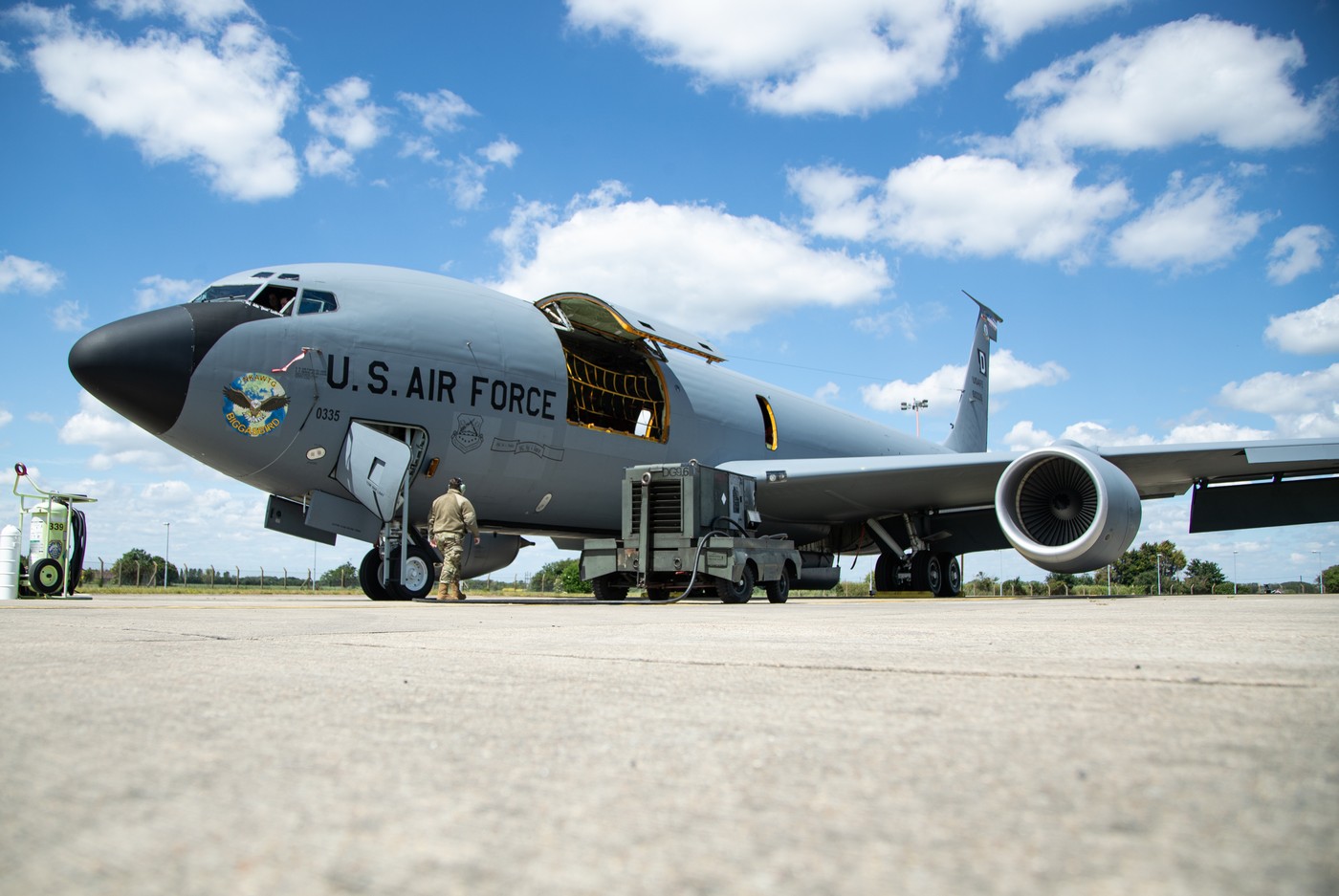
The mission:
We arrived outside the gate of the 100 ARW at RAF Mildenhall in the morning and after the usual security checks we were transferred along with our Public Affairs Officer Lt. Jacobs to 351st ARS. There we met the flight crews who were about to start their briefing and we were allowed to join them. Their mission was to refuel the last two remaining B-52s for their transatlantic flight back home. Those two bombers were about to depart from RAF Fairford earlier than us to perform a mission over the Baltics for Baltops. The other two bombers had already departed for their return to the US a day before.
For this refuelling mission, three KC-135s had been scheduled to participate. Each tanker was about to refuel each B-52 and the third tanker was going to be there as a backup in case of any malfunction or if the B-52s were going to request more fuel. For their transatlantic flight, each B-52 required a minimum of 80.000 lbs but all the tankers had extra fuel in case the bombers might require more. We were going to be on board the leading tanker of the formation which was going to refuel one of the two bombers. The two KC-135s that were going to refuel the bombers had 155.000 pounds of fuel each while the backup had 135.000.
Our crew members were: Captain Knutson Joseph, a KC-135 instructor along with Captain Chae Hee. Our co-pilot was 1st Lt Hand Stephanie and our boomer was TSg Loeslein Tyler but we also had with us A1C Robinson Alexander (boomer as well), who was on board as a backup.
The flight was going to last around 4 hours and the flight plan was to depart from RAF Mildenhall and fly with a North-Easterly heading towards the North Sea (between UK and Norway). After our rendezvous point with the bombers our flight plan included two straight lines to the North-West of 1h and 40 min total flight time – enough for the bombers to refuel and train also on their refuelling practises before they reach their point for their Oceanic Clearance.
All three KC-135s, with callsigns Logger 70,71,72, took off from RAF Mildenhall base with a 90sec (3miles) interval and all headed northeast at a speed of 0,78 Mach towards the Norwegian airspace. The formation had requested 3 different Flight Levels FL240, FL260 and FL280 where each one was going to refuel each bomber while the third was flying above all waiting to be called in. “We fly at these altitudes because the flying characteristics of the jets are better here” explains Captain Knutson and continues: “Obviously an F-16 or a B-52can fly higher but its pilot will have to struggle to keep it within the limits that the boomer wants to refuel it while there is always the potential error since there is more inertia at high altitudes.
The usual time to refuel a fighter jet is 5-8 minutes but for the bombers can take up to 30 min and this depends on the “hand” of the pilot of each receiving jet – how experienced or “rusty” he is. The speed of the jets during refuelling ranges from 275 to 310 kts. If the pilot brings the jet close enough, the boomer can turn on some lights that warn him/her to go further back. If this is not corrected immediately, the boomer lifts the boom up – disconnecting it from the fighter and its pilot has to back off and try again.
After our refuelling, which lasted around 30 min, the crew of the B-52 requested to practice themselves on approaching the boom while we were flying towards their point for their transatlantic flight, so we had the opportunity to take many photos of it.
The B-52s don’t have CPDLC so our tanker had to escort them until their exit point to the North Atlantic Tracks and receive their Oceanic clearance before we turn to the south and fly along the East coast of Scotland and later on over the mainland of England in order to proceed to our base. During their return, the three tankers flew in a relative close formation at FL290 for practice while changing positions and practised touch and goes at their base before coming to a full stop on Runway 10.
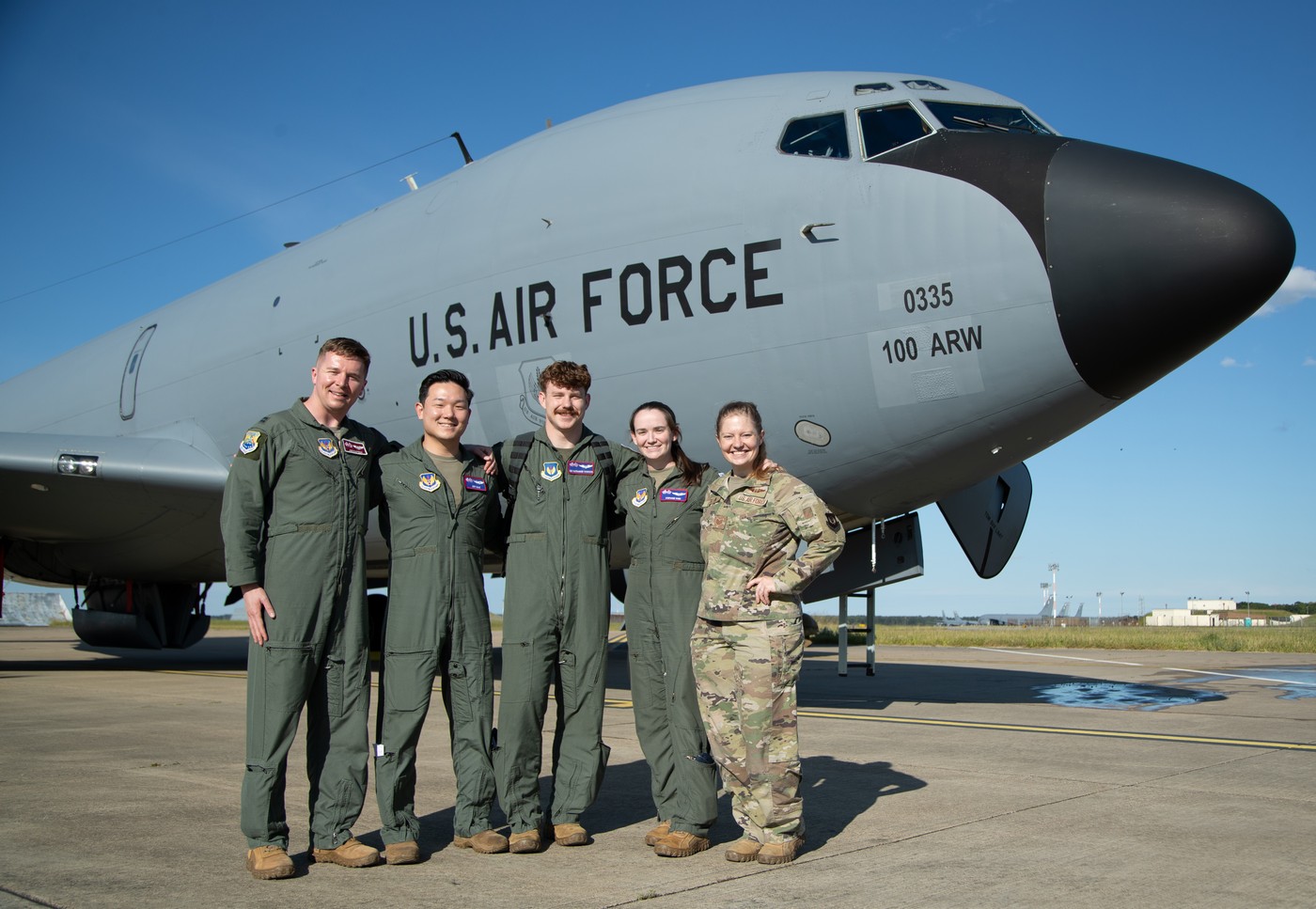
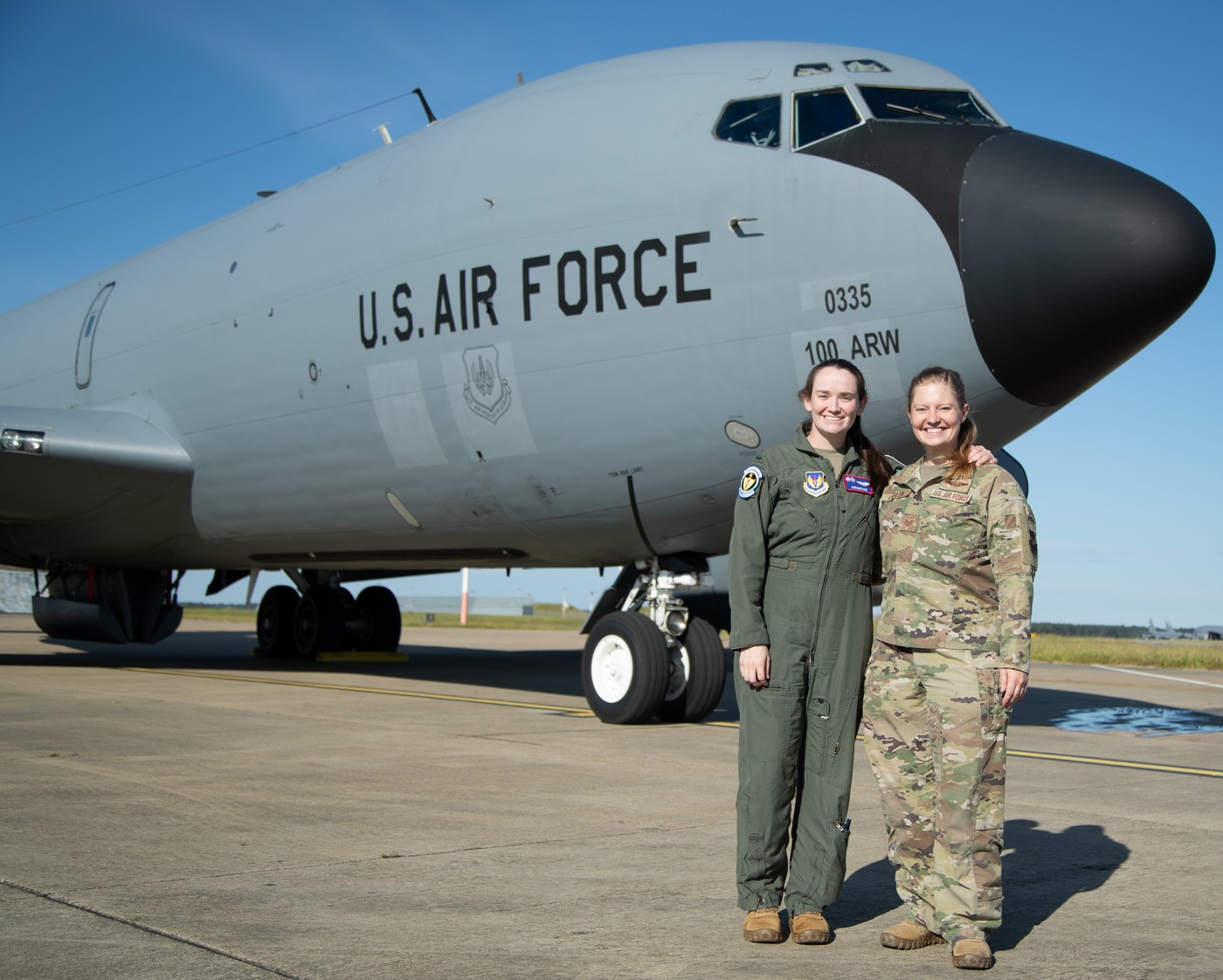
100ARW:
The 100th Air Refueling Wing is a permanent part of the United States Air Force in Europe (USAFE). It was deployed to Europe in February 1992 but carries a long history as being the previous 100 Bombardment Group, also known as “The Bloody Hundredth”, the only wing still in service from the Second World War.
The history of the 100 ARW is long and its aircraft famously carry the ‘Box D’ insignia on their tails. In fact, it is the only unit in the United States Air Force that has been authorized to display its historical insignia from World War II. Its KC-135s are the only aircraft which can display the same nose arts that its B-17s were carrying during the war!
The 100 Bombardment Group (100 BG) was established on 1 June 1942 and assigned to 3rd Bomber Command. Having received new B-17 aircraft, the group left United States on 25 May 1943 and was based at RAF Thorpe Abbots, Norfolk, where it remained throughout World War II.
On 25 June 1943, the 100 BG flew its first combat mission bombing submarine yards in Bremen, Germany. The group inherited the nickname “Bloody Hundred” due to the many aircraft losses it suffered during missions. Although 100 BG’s losses were not more than other units, there were several occasions where it lost 12 out of 13 and 13 out of 15 aircraft in a single mission! For the next six months, the group focused its bombing attacks on German airfields, industrial targets, and naval installations in France and Germany.
Just two months after entering the war, the group received its first Distinguished Unit Citation following the attack on the German aircraft factory in Regensburg on 17 August, causing massive destruction and a long-term pause in the German fighter production while in June 1944 it also supported the invasion of Normandy, France by bombing bridges and gun emplacements. The 100th Bomb Group flew its last mission on 20 April 1945, having flown more than 300 sorties and suffered a total of 177 aircraft losses!
The 100th was converted to a bombardment and a refuelling wing on 1 January 1956 at Portsmouth AFB in New Hampshire and reassigned to the 8th Air Force as part of the Strategic Air Command. For the next ten years the wing conducted strategic bombing and aerial refuelling training with Boeing B-47E Stratojets and Boeing KC-97 Stratofreighters.
In 1966, the unit was redesignated to 100th Strategic Reconnaissance Wing, flying Lockheed U-2 aircraft and BQM-34 Firebee drones. In mid-1976 the wing changed role again when it transferred its drone operations to the Tactical Air Command and its U-2s to the 9th Strategic Reconnaissance Wing at Beale AFB, California, and for the first time became an aerial refuelling wing (ARW) assuming the responsibility for providing worldwide aerial refuelling support to the 9th SRW with the Boeing KC-135Q, until its withdrawal on 15 March 1983.
After a period of more than seven years of inactivity and over 46 years since leaving England the 100th ARW returned to the UK on 1 February 1992, with the establishment of the 351st Air Refuelling Squadron forming the Europe’s only aerial refuelling wing and despite the age of its aircraft continues to provide service with its fleet of KC-135R Stratotankers to this day.
The Wing is divided into three groups:
– 100th Operations Group
– 100th Maintenance Group
– 100th Mission Support Group
The 100th Operations Group is divided into two squadrons: The 100th Operations Support Squadron and the 351st Air Refueling Squadron. The 100th Op erations Support Squadron provides training, operational and operational support to the US Air Force and NATO allies in the European/African theaters, including intelligence and adversary threat analysis, flight planning, mission planning, tactics, aircrew communications, weather , aircrew flight equipment, flight records management, KC-135 simulator, survival training and data analysis.
The 351st Airlift Squadron, in addition to aerial refueling, provides aeromedical evacuation, airlift and rapid emergency response for US and NATO fighters, bombers, support and reconnaissance aircraft in the airspace of the Atlantic Ocean, Europe, Africa and the Southwest Asia. It has 15 aircraft and approximately 27 crews for its KC-135s, ready for missions in special operations as well as training missions.
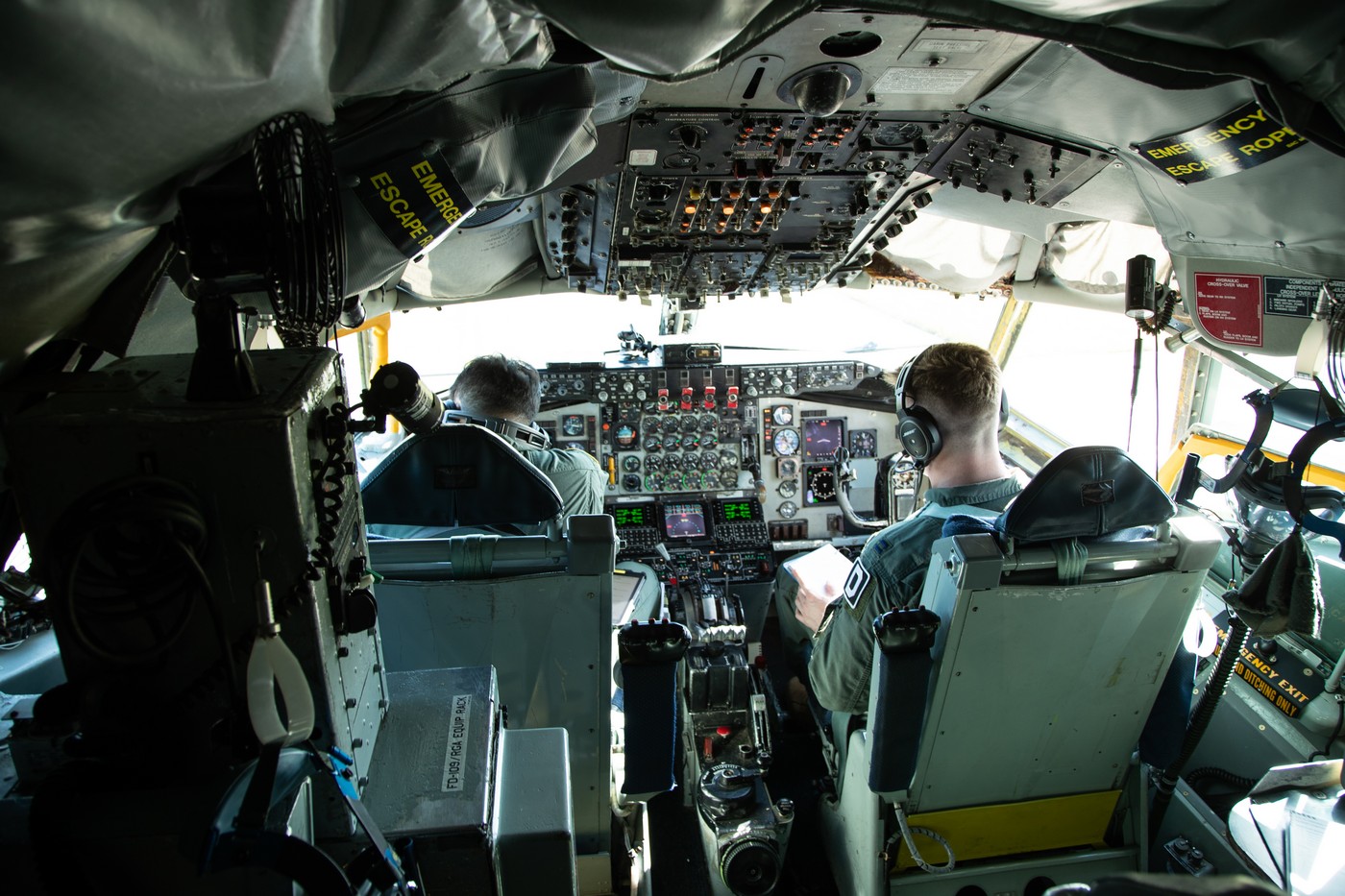
B-52:
The B-52H can fly at high, subsonic speeds at altitudes reaching 50,000 feet, with an unrefueled combat range in excess of 8,800 miles and carry precision-guided ordnance with worldwide precision navigation.
Aerial refuelling offers the B-52 an unlimited range limited only by crew endurance The Gulf War involved the longest strike mission in the history of aerial warfare when B-52s took off from Barksdale AFB, launched conventional air launched cruise missiles and returned to Barksdale: a 35 hour, non-stop combat mission.
In a conventional conflict, the B-52 can perform strategic attack, air interdiction, offensive counter-air and maritime operations. During Desert Storm, B-52s delivered 40 percent of all the weapons dropped by coalition forces. It is highly effective when used for ocean surveillance, and can assist the U.S. Navy in anti-ship and mine-laying operations. Two B-52s, in two hours, can monitor 140,000 square miles (364,000 square kilometres) of ocean surface.
For more than 40 years B-52 Stratofortresses have been the backbone of the manned strategic bomber force for the United States. The B-52 is capable of dropping or launching the widest array of weapons in the U.S. inventory.
Current engineering analyses show the B-52’s life span to extend beyond the year 2050. A total of 744 B-52s were built with the last, the B-52H, delivered in October 1962. Only the H model is still in the Air Force inventory and is assigned to Air Force Global Strike Command and the Air Force Reserves. There are 72 B-52Hs currently in service, currently operated by three Wings:
- The 2nd Bomb Wing at Barksdale AFB in Louisiana
- The 5th Bomb Wing at Minot AFB in North Dakota
- The 307th Bomb Wing (18 examples, acting as reserve force, part of Barksdale AFB)
There are other Wings – Squadrons at Eglin AFB, Nellis AFB and Edwards AFB but they are of a supporting nature. These remaining aircraft are about to receive another major upgrade to their airframe. This new B-52J upgrade program, as it will be called, will include a variety of new armament (Weapons Bay Upgrade) and targeting (CONECT) systems that will offer the ability to carry current and future weapons but the two main elements are the new engines (Commercial Engine Replacement Program) and the radar upgrade to AESA (Radar Modernization Program).
In particular, the eight Pratt & Whitney TF33 turbo engines are to be replaced with the new Rolls Royce F130, a derivative of the civilian BR725, while the existing Northrop Grumman AN/APQ-166 radar with the modified Raytheon model based on the APG-79 and APG-82. Unfortunately this entire upgrade program has received several successive delays, and recently USAF officials announced that this modernization effort will not have entered service until 2033. But this new modernization will offer this strategic “dinosaur” 30 more years of service, thus reaching 100 years of life!
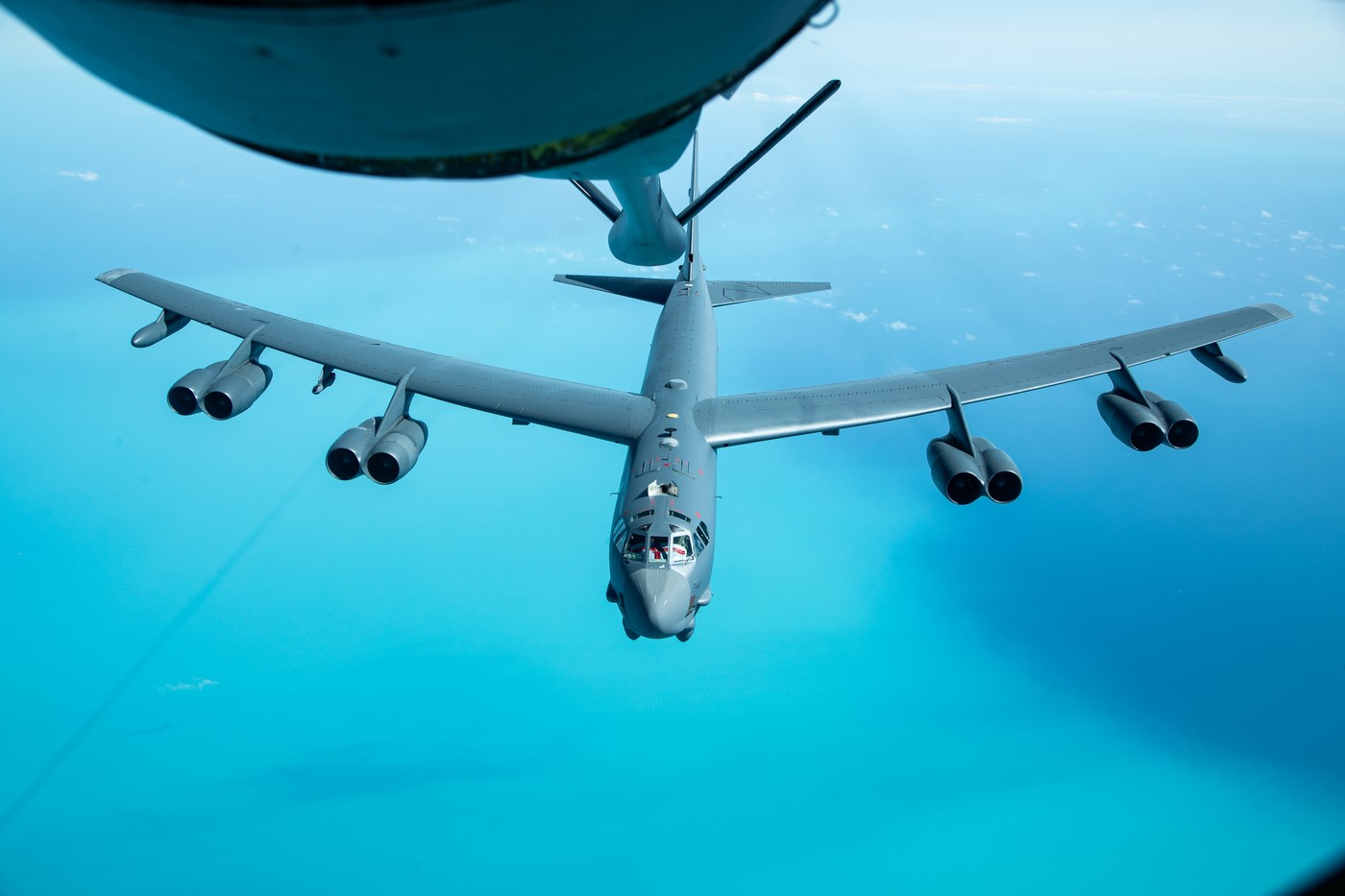
KC-135:
The Boeing KC-135 Stratotanker was designed from the Boeing 367-80 model (the basic design for the commercial 707 passenger plane) almost 70 years ago! It left the Boeing factory in Renton on July 20, 1956, and its first flight took place on August 31. Its operational service began on 30 April 1957 with the 93rd Air Refuelling Squadron at Castle AFB in Merced, California. USAF had to find a new tanker aircraft because the older KC-97 could not fly at the higher speeds of the new B-52 strategic bombers that it was going to receive.
A total of 820 Boeing C-135 versions were built over a decade of production, of which 749 KC-135s were built for the US Air Force as A & B models. The last KC-135 was delivered to the Air Force in 1965.
The current KC-135R model is a modernized version fitted with CFM International F-108-CF-100 turbofans (the military version of the CFM56 – the engine which is in wide use with the Β737s and A320s) to offer greater thrust, better performance and above all fuel economy, combined with reduced maintenance costs and compliance with modern noise restrictions.
Each CFM-56 engine provides an impressive increase in thrust of 22,000 pounds over the original J-57 engines of the A models, which produced only 13,750 pounds each. The first KC-135R left Boeing’s Wichita facility on 22 June 1982, with the first unit (384th ARW at McConnell AFB) receiving its aircraft in June 1984.

The future of the KC-135:
Having taken part in all the war theatres of modern history, it seems that these flying “Gas Stations” will remain “open” for many years to come. It is very likely that the Stratotanker will reach 90 years of life, perhaps even more, when the last aircraft of the type will be retired from active service.
The USAF’s original plans were for the KC-135 fleet to be completely replaced by the KC-46 Pegasus – the winner of the KC-X competition – but their small (based on current orders) numbers, due to cutbacks, will never allow replacing them completely. So the only solution for the USAF is to keep them in service for at least another 20 years. When the acquisition of the 179 new KC-46s will finally be completed, approximately 100 KC-135s will be retired from service and be placed under maintenance at the AMARG “graveyard” at Davis-Monthan AFB, Arizona. Today these “dinosaurs” along with the B-52s are the USAF’s two oldest jet aircraft and apparently both are not thinking of retirement anytime soon!
George Karavantos is from Athens, Greece. His love with military aviation started at the age of 10 when he accidentally read a Greek aviation magazine. Since then, he never stopped reading about fighter aircraft and taking photos of them. He was too tall to become a fighter pilot, so he became an airline pilot. Nowadays he is a Captain and a Flight Instructor on the A320 aircraft. Despite his profession, military aviation will always be his obsession.

